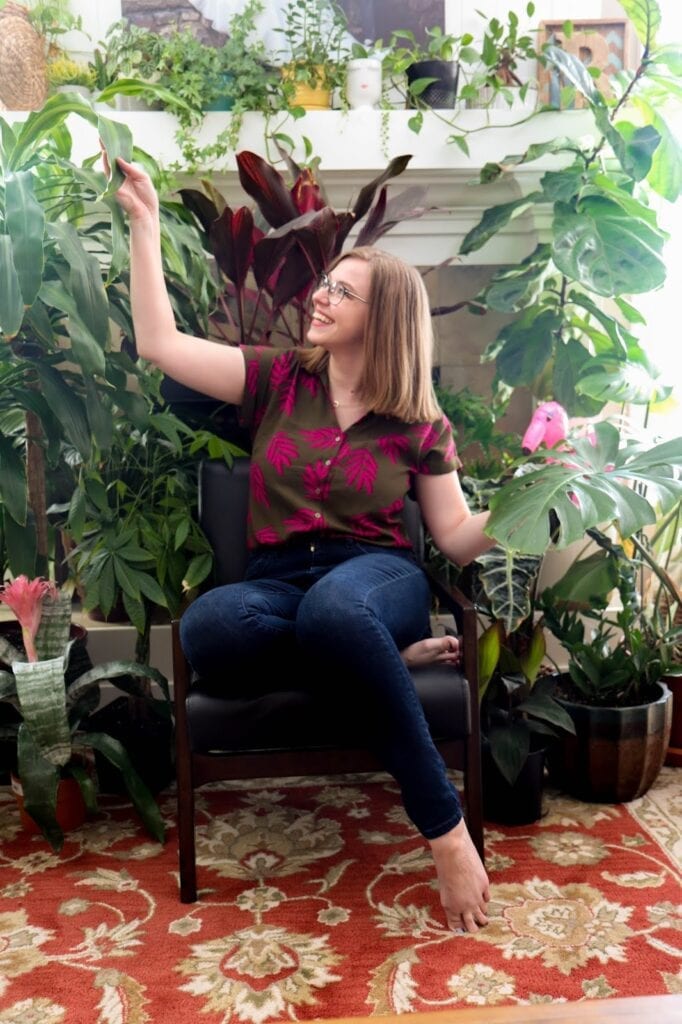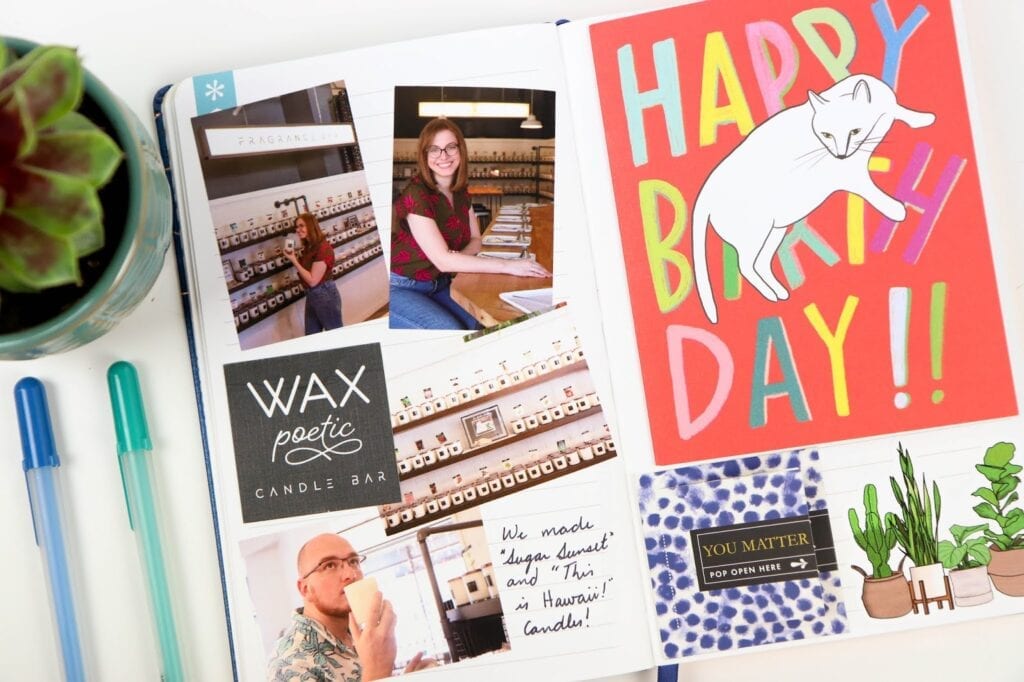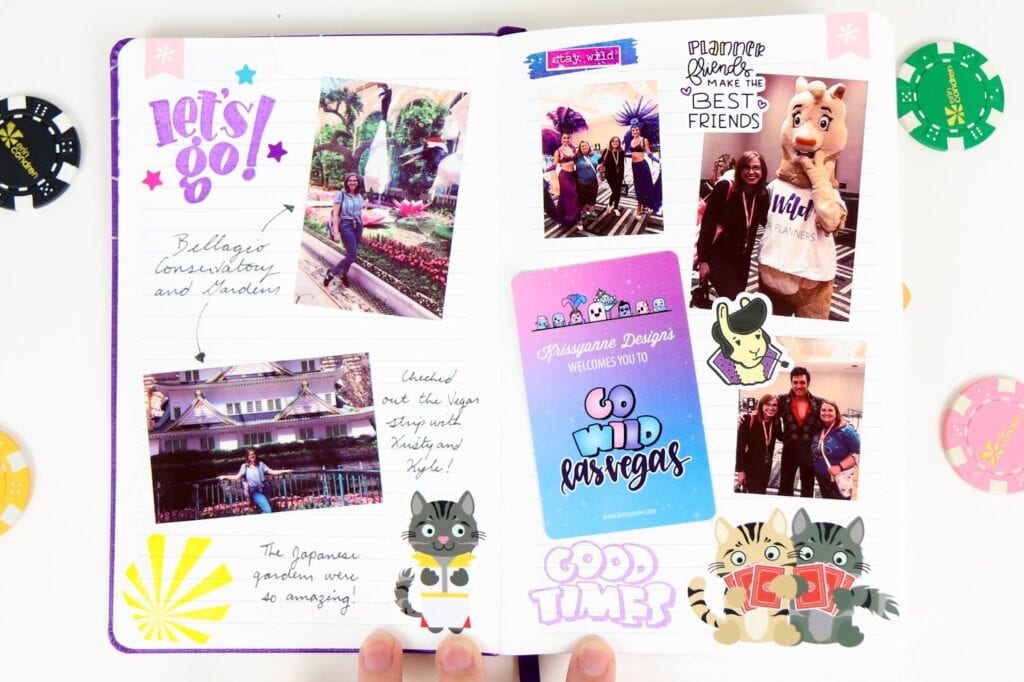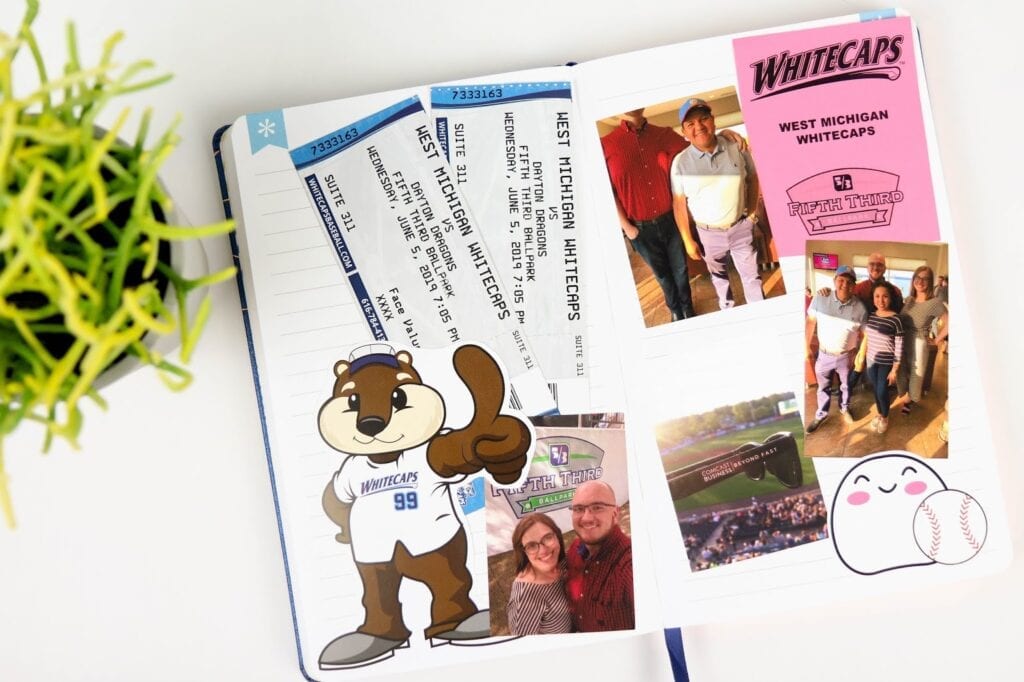
We talked about travel anxiety in a recent post, but I wanted to dive into the tricks I’ve learned along the way that has made travel a breeze. I travel about once a month and these tips make it possible.
Join every frequent flyer program you can find. No matter what airline I’m flying on, I make sure I’m part of their program to get points for the flights. That way, one day down the road I’ll have enough points for free travel. It seems silly if you don’t use the same airline that often, but over time it can really pay off. Plus the programs are free so what does it hurt?
Along the same lines of frequent flyers are credit card points. Depending on what card you have, you’ll receive points from purchases. We run our entire business through our credit cards in order to get the most points possible. We use those to pay for flights and hotels for conferences and events. As long as you pay off your credit card balance in full every month, it’s basically like the credit card company is paying for your travel.
Once you’re actually traveling, pack Ziplock bags with you. I usually bring one gallon bag with a few sandwich bags inside. You never know when you’ll need a ziplock bag. It’s great to keep your liquids separate from other things in your bag if they happen to spill. Maybe you went swimming the night before your flight leaves and still have a wet swimsuit. They’re great to have on hand, just in case.
I’ve personally never been very good at documenting a trip while I’m on it, so I recommend keeping daily adventure lists of what you get up to. Nothing too fancy, just a list of places you went, things you saw, and food you ate. That way when you get back home you won’t have to remember all the details when you’re trying to document the trip.
Although I’m a bit biased with this one, film it. Film the entire trip in one capacity or another. Even if it’s just short clips on your phone, you’ll love being able to look back and see better snippets than just posed photos. Phone storage is way better these days so you won’t have to worry about using up your space.
Any other seasoned travelers out there? What are your top tips?
film it

It’s been five years. Five years of decorative planning. I’ve learned a lot over the past half decade (wut. why did I even say it that way? Now I can’t get that out of my head…) and I have quite a lot of insight for younger me.
Dear Kayla from 2014,
You don’t need a ton of washi tape all at once. I mean, you’ll soon find out you don’t like it at all, but you definitely don’t need 30+ rolls when you’ve only used a few inches of the first roll you purchased. Take things slow, figure out your planning style, and then invest in high quality products you’ll use until they run out.
It’s ok if your planning style changes. When I first started, I felt terrible when I suddenly didn’t like the vertical planner I obsessed over for months before purchasing. Planner guilt is a real thing and you don’t have to beat yourself up if the system no longer works for you.
Matte stickers are indeed better than glossy. Now, it does matter what type of matte paper we’re talking about. That silky smooth type is king and beats out all other types. I know you’re obsessed with glossy now, but you’ll see.
You’ll find other like-minded people. It may feel like you’re a weirdo and no one relates to you, but soon enough you’ll find your tribe of planner addicts and make a ton of lifelong friends. Just hold out and keep doing what you love.
One day, you’ll finally figure out what to do with leftover stickers. I know you’re frustrated by them now and don’t know what to do with that giant stack, but you’ll soon learn to combine like colors and do one color spreads. You’ll feel stupid when that retaliation comes.
I know you take your spreads very seriously and what them to be Instagram perfect, but you’ll realize (a little too late), that style of planning just doesn’t work for you. Function over form because at the end of the day, that planner needs to help you not be a piece of crap more than it needs to look good.
Sincerely,
Kayla from 2019
What are some things you wish you knew when you started decorative planning?

We recently hosted my 27th birthday at our house. Always having a flair for the dramatic, I wanted the theme to be “urban jungle.” Of course it was met with a lot of confusion from friends who are most definitely not plant enthusiasts. As soon as they strolled through the front door it definitely sunk in. Over 30 gorgeous houseplants all stacked up right there in the living room (with a chair for plant selfies of course).
Now people knew I enjoyed houseplants, but the party really brought the obsession to light. I get questions a lot online and in person about how I can keep so many (and different) plants alive. I gotta tell you, it really is super simple. I wish I had some super secret magic trick my great-great-grandmother passed down through the generations, but alas. No silver bullet plant growth tips here.
It’s all about the water and sunlight. Which I mean, duh, but it’s more than just pouring some water in and sticking a plant in front of a window. Plants, like people, are all different. Even ones in the same species have different needs. Plants I mean (well people too I guess!). I found my best plant success when I stopped listening to what the tags in the plants told me to do and started listening to the plant itself. (Insert plant whisperer imagery right here).
Sure I start off doing what the tag suggests, but I keep an eye on the plant to see if that’s what it really wants. I always start my plant off in a location I hope it’ll like and works with my decor, but more often than not the plant wants another spot. Over the next month or so if the plant doesn’t get any new growth and starts looking sickly, I’ll move it into more light or less light depending on where it is.
As for water, I water all of my plants once a week but vary the amount of water that goes to each plant. Succulents and cacti get just a little to get the top soil a bit wet while the rest of the plants get water based on the size of their pots. All of my plants have a bed of rocks and sand at the bottom of their pots before the soil, so I never worry too much about over-watering them as they have a place to store that water away from the roots. The larger the pot, the more water as it dries out quicker. Plus the plants are usually larger in those pots and need more water anyway. I also recommend rotating your plants as they’ll start to bend towards the light source over time.
It’s honestly quite simple. Your plant will tell you if it’s happy with new growth, and it will tell you if it’s not with brown leaves and droopy looking branches. Plants are quite hearty creatures, but do demand a little attention now and again. I find that succulents and cacti are the hardest plants to keep happy as they don’t show effects as quickly as other plants. So I tend to stick to the tropical or vine varieties that give me quicker satisfaction in seeing them grow.
Now you definitely don’t need 30 plants, but one or two will make all the difference in a space. Start that urban jungle!
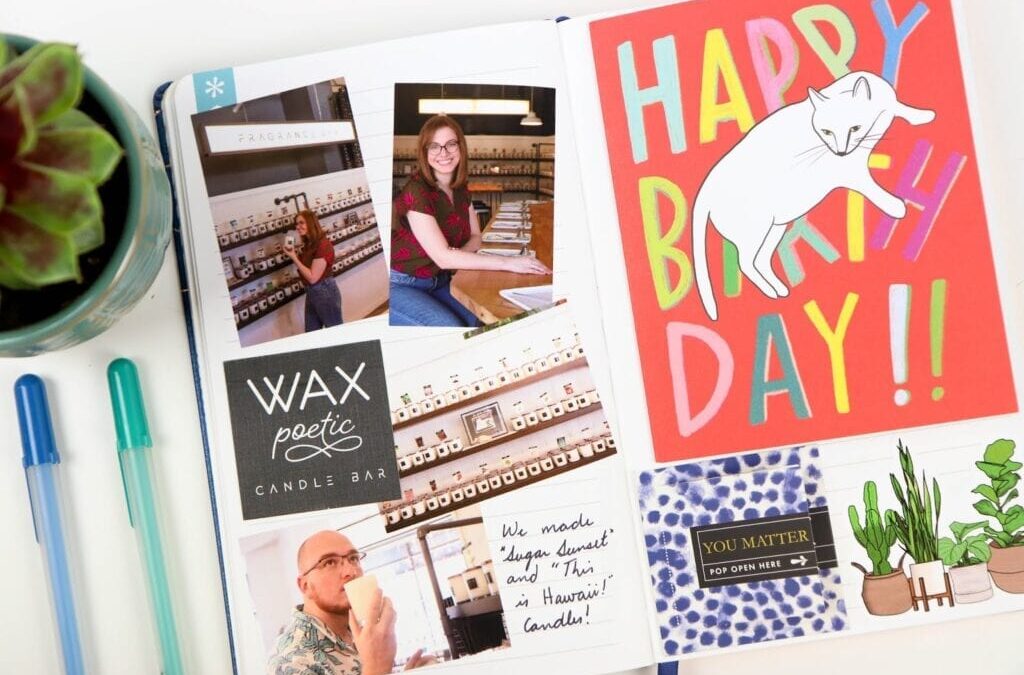
Whether you’re a weekly planner, bullet journal-er, or avid to do list maker, don’t forget to make sure this one particular thing is in your planning routine. Memory keeping.
For the longest time I avoided memory documenting because I thought I had to be good at scrapbooking (which I most definitely am not). It seemed like such an expensive hobby to get into to be any sort of good at it and it just wasn’t what I wanted to spend my free time on (I rather be napping honestly). So I added a few photos here or there but didn’t really do any memory keeping. I missed out on preserving a lot of awesome moments and now I’m here to make sure you don’t miss out like I did.
So why should you start? Because it’s super easy. I just use the
softbound notebooks from Erin Condren and paste down business cards, birthday cards, ticket stubs, and of course photos. My rule of thumb is if I have at least photos and one memento from an event, it’s worth documenting.
It may seem silly to document little things like a baseball game now, but I know future me will appreciate the effort. One day I’ll look back and easily remember the event and it’ll be awesome to see me and Alex in our early years of marriage.
So whether you add some memory planning into your current planner on some note pages or you break out a whole new notebook, just start. Grab the scissors and glue and get to work. You’ll become addicted to it in no time.

I’m no stranger to burnout. It’s like anxiety in how it constantly hangs around, unwanted, giving unnecessary feedback. Sure I much rather have it not exist at all, but burnout is a part of any profession in one way or another. So here’s how I’ve learned to embrace it over the years.
First off, I’ve accepted that burnout is inevitable. It’s going to happen no matter how hard I’m motivated or passionate about what I’m doing. Sure it may become less frequent, but it can’t be avoided forever. I think once I accepted this fact, burnout stopped being so crippling. I no longer feel like a complete failure if I’m feeling burnt out, but rather that it’s just part of the cycle and I’ll be back to being motivated in no time.
I’ve also started scheduling more mental health days to try and add more distance between burnouts. I’ll take a half day off of work to do something just for fun. It helps reset the batteries, keeps me motivated, and usually has a way of inspiring me in the process.
When burnout eventually does strike, I look at it as an opportunity to try and look at things from a different perspective. I’ll try and work on another project or putz on things around the house. I find it’s when you’re not paying attention that creativity strikes. And if a great new idea doesn’t strike during burnout to jump start things again, that’s ok too. I try to remind myself why I started to remain positive and let the burnout pass.
Burnout is going to happen, especially if you’re working in a creative field that constantly demands new things from you. It’s better to embrace it rather than fight it, because burnout will win in the end. So go along for the ride, take a day off every once in a while, and don’t stress out too much (I’m talking to you Kayla in the future).






